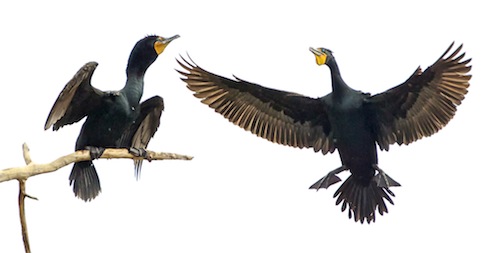
Courtship and mating season are an awesome time for wildlife photographers, I love the shows that are put on! Many species are at their most colorful and you can always count on a fight breaking out early on.
Males can suffer in many ways, loosing a fight is just one of them. I've seen many male Cormorants (like the ones above) put on the most detailed courtship dance . . . to a female that could care less, or wose yet - to one that was "already married"!
It's spring, and love is in the air!
Stay focused,
Mark

 Just Hanging Around . . . Waiting for a Chance to Split
Just Hanging Around . . . Waiting for a Chance to Split

 I had the opportunity to visit
I had the opportunity to visit 




